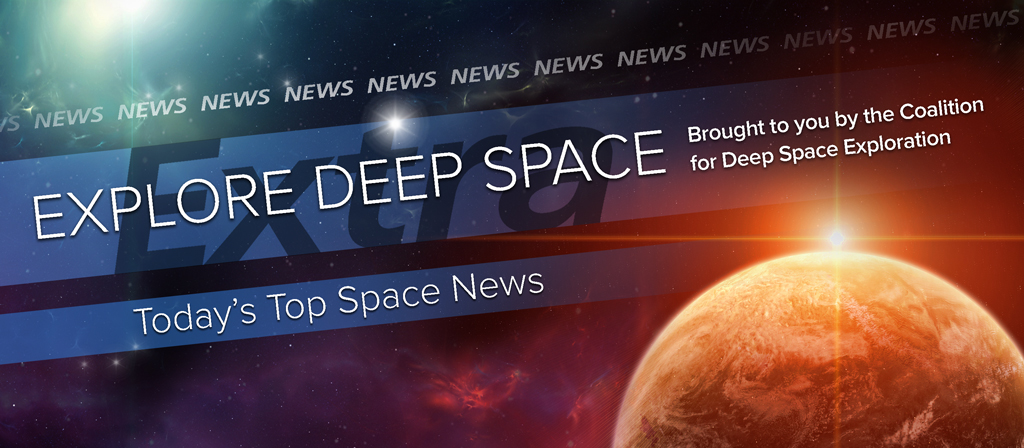In Today’s Deep Space Extra… Human explorers: an important part of advancing scientific discovery on Mars
Human Deep Space Exploration
Why a Mars landing could be terrific for science
The Space Review (2/15): Essayists Chris Carberry and Rich Zucker, of Explore Mars, counter the views held by some that the human exploration of Mars might obscure evidence of indigenous life with terrestrial contamination. Most of Mars has so far been shown to be hostile to the potential replication of terrestrial microbes, according to Carberry and Zucker. “Indeed, we firmly believe that the human exploration of Mars will almost certainly be terrific, not terrible, for science,” they write.
Simulating life on a deep space mission
Cosmos (2/15): A new series of human deep space analog missions at NASA’s Johnson Space Center, the Human Exploration Research Analog, is serving as a rapid turnaround opportunity to study the challenges of isolation and confinement required for missions of deep space exploration. Scientists expect to fill in the gaps in what they need to know to select crews for an eventual mission to Mars in the close quarters and remote confines of a spacecraft.
Bill Nye: Could genetic engineering and replicators be the key to colonizing Mars?
Forbes.com (2/12): The Martian, an acclaimed film about an astronaut stranded on Mars, prompts a discussion at a Los Angeles forum on the future human exploration and settlement of Mars. Experts point to the need for engineering replicators that could turn resources on the red planet into tools and genetic engineering to establish the human attributes needed to colonize a distant planet.
NASA moves to enforce early switch to EUS for SLS
NASAspaceflight.com (2/15): Despite a reduction in spending for the Space Launch System in NASA’s proposed 2017 budget, space agency engineers are looking at an upgrade of the exploration rocket’s second stage for Exploration Mission-2, the first piloted test flight of the Orion crew vehicle and the SLS heavy lift launch vehicle. The envisioned Exploration Upper Stage could provide a range of new missions and higher flight rate for the rocket.
Space Science
The Space Review (2/15): Last week, physicists using the ground-based Laser Interferometer Gravitational-wave Observatory (LIGO) announced the confirmation of gravitational waves, a rippling of the fabric of space time predicted by Albert Einstein’s Theory of General Relativity. The ripple was traced to the collision of two distant black holes. A difference in the masses as they collided was converted into waves of energy. The find, which promises to open a new field of astronomy, also pointed to the existence of “medium sized” black holes. In December, the European Space Agency launched a space-based technology demonstrator in the field, LISA.
NASA’s Valentine’s Day flower harvest takes space gardening beyond romance
ABCNews.com (2/15): NASA astronaut Scott Kelly has harvested Zinnia plants growing aboard the International Space Station, and after rescuing them from a soggy few days earlier this year. Scientists on Earth will examine the health and changes to the preserved foliage. The outcome could back efforts by future astronauts to grow their own food and turn carbon dioxide to oxygen aboard spacecraft bound for deep space.
Space prunes for healthy astronaut bones?
Discovery.com (2/12): Prunes, in space as well as on the Earth, may have unrecognized health benefits. In space, the nutritious fruit may fend off damage to the skeletal system from radiation.
Low Earth Orbit
How satellites can help control the spread of diseases such as Zika
The Conversation (2/15): Earth observing remote sensors aboard satellites, aircraft and unmanned aerial vehicles could be used to track environmental conditions where mosquitoes carrying viruses like Zika flourish to aid in disease control.
What astronauts miss most in space isn’t what you’d expect
PBS via Huffington Post (2/15): On Mar. 1, U.S. astronaut Scott Kelly and fellow International Space Station resident Mikhail Kornienko, of Russia, will return to Earth after nearly a year in orbit. Among the things Kelly misses most are the forces of nature, including the feel of the sun and wind on his face. The long journey will inform efforts by NASA to reach Mars with human explorers.

